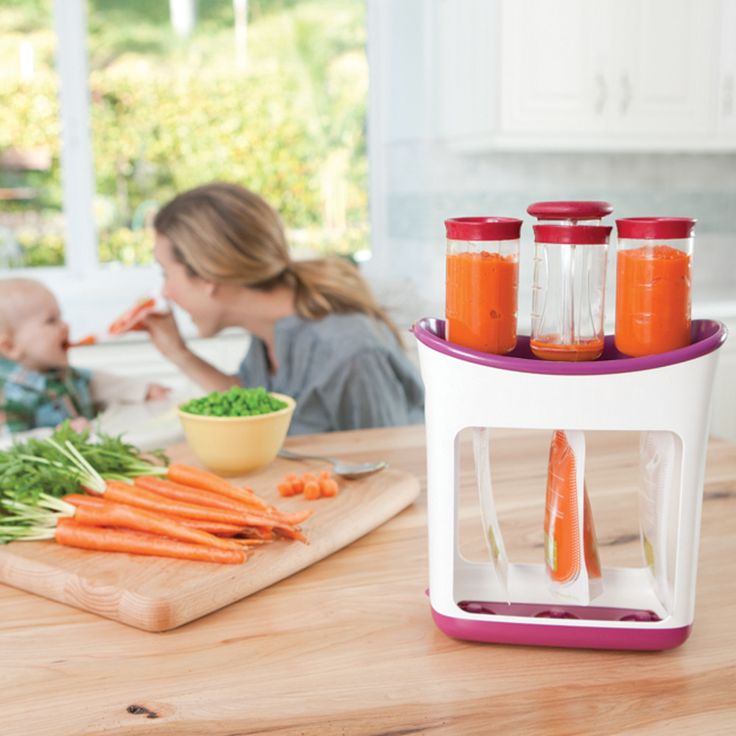Getting baby back to breast after bottle feeding
How to Get Baby Back to Breast
Sometimes breastfeeding doesn’t get off to a good start and before you know it your baby is taking more and more bottles and won’t breastfeed at all. Getting a baby back to breastfeeding after a period of bottle feeding can take some patience and perseverance, but it is definitely possible. If your breast milk supply has dropped then in addition to getting baby from bottle to breast you may have to build your milk supply or relactate. This article reviews how to get baby back to breast after a period of bottle feeding.
Tips to get started
- Build your breast milk supply by regular pumping or hand expression as needed or see our Tips for Relactation
- Keep your baby well fed while he practices breastfeeding so he doesn’t learn to associate hunger and frustration with the breast. Being hungry won’t force a baby to breastfeed well.
- Stay calm—practice breastfeeding without pressure, relax your shoulders and try not to look tense, smile! Follow your baby’s cues if he seems stressed and try again at another feed.
- Be patient—it can take a while for a baby to learn something new but lots of babies have made the change from bottle to breast. Never try to force your baby to the breast as this will be counterproductive.
How to get baby back to breast
Skin-to-skin
Babies have a strong instinct to breastfeed and their instincts tend to be at their strongest when they are held close to the breast in skin-to-skin contact. Try holding your baby next to the naked breast without pressure to latch on (attach to the breast). The fewer clothes between you the better.
- Remember to take off any scratch mittens so your baby can use his hands and tune into all his natural feeding reflexes.
- Relaxing in the bath together in low lighting with your baby between your breasts can encourage feeding reflexes.
- Using a sling around the house can give your baby easy access to the breast.
- Don’t worry if your baby doesn’t try to latch during his first time skin-to-skin—the important thing is to help your baby associate the breast with a warm, relaxing and safe place to be with the opportunity to breastfeed when he is ready.
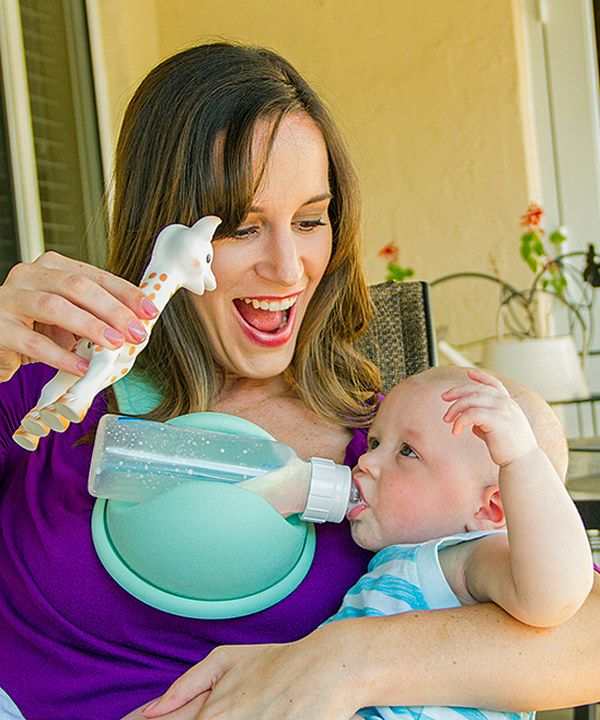
Try different breastfeeding positions
The way a baby is held at the breast can help or hinder latching. In the right position many babies can latch on all by themselves. Laid back or reclining positions can be particularly helpful with self latching. Our articles Breastfeeding Positions for Newborns and Breastfeeding Videos describe the main breastfeeding positions. If you’re not sure of the best way to hold your baby, contact your breastfeeding helper or IBCLC Lactation Consultant, it will really help to have an experienced cheer leader at your side.
Avoid using a dummy or pacifier
A dummy or pacifier encourages a different suck to the one required for a good latch on the breast and also takes the place of the breast as main comforter. Try to reduce reliance on a dummy by offering the breast and skin-to-skin contact as the comfort for your baby instead. Letting a baby suck on a clean finger can also help to introduce a baby to the feeling of skin in their mouth as a comforter instead of a silicone teat.
Avoid using a bottle for some or all feeds
One way to encourage a baby to breastfeed is to reduce their reliance on a bottle teat to pave the way for a different feeding method. Alternatives such as cup feeding or finger feeding can encourage breastfeeding by helping to break a baby’s association of food with artificial teats.
- Cup feeding. Even very young babies can feed from an open cup when it is done carefully see Cup Feeding a Breastfed Baby for videos and more information.
- Finger feeding. Finger feeding involves a baby sucking a parent’s finger with a narrow gauge supplemental feeding tube held or taped alongside, through which the milk flows when baby sucks. The sucking technique needed for finger feeding is said to be closer to breastfeeding than bottle feeding, and finger feeding can introduce a baby to the feeling of skin in their mouth instead of a silicone teat. See What is Finger Feeding? for more information.
 After a little finger feeding to calm your baby and take the edge off his appetite, you could try moving him to the breast. Ensure your breast is soft and not over full to help him grasp the breast tissue to form a teat shape.
After a little finger feeding to calm your baby and take the edge off his appetite, you could try moving him to the breast. Ensure your breast is soft and not over full to help him grasp the breast tissue to form a teat shape.
Make a bottle feed more like a breastfeed
If you can’t avoid bottles yet, try to make bottle feeding more like breastfeeding by following these tips to bottle feed a breastfed baby. When bottle feeding is more similar to breastfeeding it can help a baby transition between the two ways of feeding more easily. The shape of the teat, the flow rate and the way you offer milk in a bottle can help or hinder breastfeeding. Some mothers hide the bottle in a cloth and keep baby next to a naked breast during their feed to help them associate the breast with milk.
Nipple shields—make a breast more like a bottle
Nipple shields are small silicone covers with holes in the tip that fit over a nipple. Because a nipple shield will feel and taste closer to a bottle teat this can be a helpful bottle-to-breast transitioning tool for babies who are already used to bottles. It may be helpful to try it when your baby is sleepy or in light sleep and with a breast full of milk. Expressing a little milk into the end of the shield will give your baby an instant reward if he latches. Some breast compressions can help keep your baby’s interest if he does latch. Breast compressions involve applying gentle pressure to your breast to stimulate milk flow—be sure to keep your fingers far enough from your nipple so that you don’t disturb your baby’s latch. See Nipple Shields Good or Bad? and What is Breast Compression? for further information.
It may be helpful to try it when your baby is sleepy or in light sleep and with a breast full of milk. Expressing a little milk into the end of the shield will give your baby an instant reward if he latches. Some breast compressions can help keep your baby’s interest if he does latch. Breast compressions involve applying gentle pressure to your breast to stimulate milk flow—be sure to keep your fingers far enough from your nipple so that you don’t disturb your baby’s latch. See Nipple Shields Good or Bad? and What is Breast Compression? for further information.
Some mothers have had success with latching by placing a bottle teat over their nipple for a practice session. Make sure this doesn’t rub and make you feel sore.
A sleepy baby may latch
When your baby is in a light sleep or not frantically hungry bring him skin-to-skin next to a full breast; he may latch in his sleep. Or hold your baby for a full sleep cycle in your arms and offer the breast when you see the earliest feeding cues. It can help if you can initiate the let-down (milk release) before your baby goes on to the breast so that there is an instant reward of milk. If your baby latches, some gentle breast compressions can increase milk flow. A dark and quiet room can be helpful to avoid distractions for your baby. See Bed-Sharing With Baby for safety information if you are considering bed-sharing.
It can help if you can initiate the let-down (milk release) before your baby goes on to the breast so that there is an instant reward of milk. If your baby latches, some gentle breast compressions can increase milk flow. A dark and quiet room can be helpful to avoid distractions for your baby. See Bed-Sharing With Baby for safety information if you are considering bed-sharing.
Try switching between bottle and breast
Switching from a bottle to the breast half way through a feed has worked for some mothers by slipping the bottle teat out of baby’s mouth and quickly moving them onto the breast before they notice. If baby hesitates at the feel of skin in their mouth a little gentle rocking or movement can encourage them to continue with the latch.
Use play and humour
For a slightly older baby, using new positions in a playful way may help turn breastfeeding into more of a casual fun thing, rather than an activity that creates tension and anxiety. Trying different positions and places for latching on—in the bath, the garden, kitchen, while walking about, in a dark room, even dangling a breast over him when he is on the floor (while you both giggle)—may all help make it more of a fun thing to do. Sometimes being inventive and making a silly game involving breastfeeding may work.
Sometimes being inventive and making a silly game involving breastfeeding may work.
Watch other mothers and babies breastfeed
It can be helpful to spend time with other breastfeeding mothers for support and ideas. An older baby may be interested to copy other babies breastfeeding.
ⓒEmily WalkerOnce your baby latches…
Full breast or empty breast?
Try to strike a balance between offering a soft breast which will be easier for a latch, and a breast that is full enough to give an instant reward of plentiful milk. Shaping your breast ie compressing it/flattening it slightly to fit your baby’s mouth can help your baby latch (i.e. the same way you might flatten a big sandwich full of lettuce before you take a bite). See Latching Tips for further help.
Stay relaxed
The first time your baby latches to the breast will be very exciting, you may find you tense up or hold your breath. Try to relax and act like this is natural and nothing special! You could sway slightly or rock your baby gently at this point. Some mothers have tried singing or chatting to their baby while their little one latches. The next step is providing an instant reward for any suckling, either via a full breast and an already initiated let-down or by breast compressions or with a supplemental nursing system (see below). As soon as your baby is taking good volumes at the breast try to phase out using the bottle for any top-ups so your baby can learn to breastfeed without nipple confusion.
Some mothers have tried singing or chatting to their baby while their little one latches. The next step is providing an instant reward for any suckling, either via a full breast and an already initiated let-down or by breast compressions or with a supplemental nursing system (see below). As soon as your baby is taking good volumes at the breast try to phase out using the bottle for any top-ups so your baby can learn to breastfeed without nipple confusion.
Supplemental nursing system
If your milk supply is very low, supplementing at the breast with a homemade or commercial supplemental nursing system can help transition baby back to breast once they begin to latch. If your baby is latched correctly the thin feeding tube of the supplementer runs alongside the nipple or nipple shield delivering plenty of breast milk or formula. This helps give your baby a positive association with the breast as a food source and will also stimulate your own supply simply by baby being latched on. It can be fiddly and take some practice, and bear in mind an older baby may be aware of the tube at first. See Breastfeeding With a Supplemental Nursing System for more information.
It can be fiddly and take some practice, and bear in mind an older baby may be aware of the tube at first. See Breastfeeding With a Supplemental Nursing System for more information.
Finish at the breast
If your baby is still having supplements by bottle but has started to latch, it can sometimes work well to offer most (but not all) of the supplemental feed first and then finish with a breastfeed. This way a baby learns to fall asleep full and contented at the breast. As your supply increases and baby’s technique improves less supplement can be offered before the feed so that the bottle is gradually phased out.
If breastfeeding hurts…
Working with an IBCLC lactation consultant when you are trying to get your baby back to the breast can be a great support. There may be good reasons why breastfeeding didn’t work out the first time and it can help a great idea to talk these through. Maybe it was because breastfeeding hurt because your baby was in a shallow latch, or you didn’t think you had enough milk, or you had flat or inverted nipples.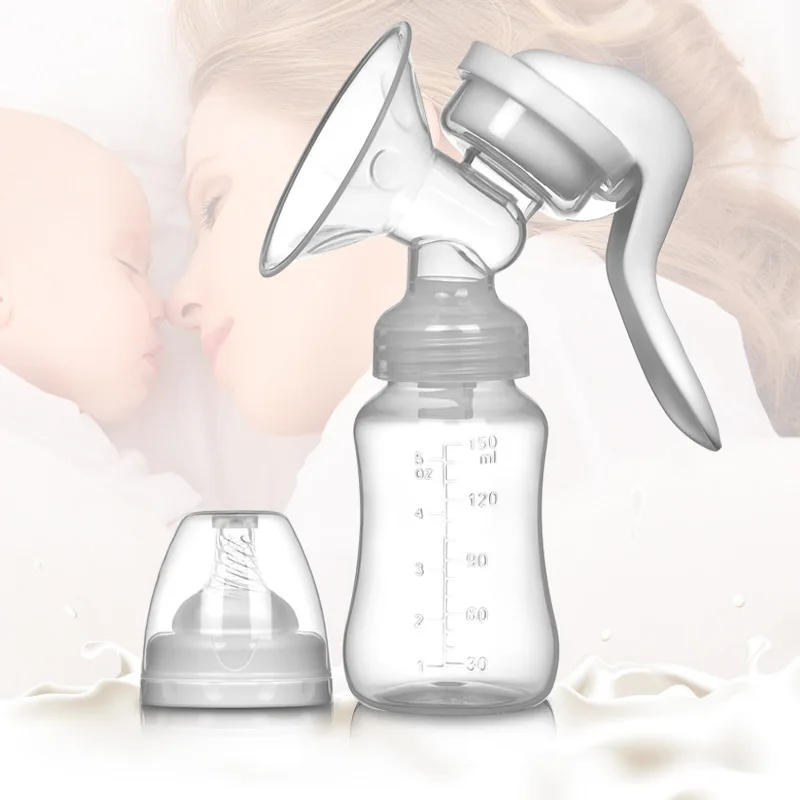 Knowing answers to common problems can help prepare you for any blips in your bottle-to-breast journey. Your lactation consultant will be able to make suggestions to improve latch, positioning and tongue function.
Knowing answers to common problems can help prepare you for any blips in your bottle-to-breast journey. Your lactation consultant will be able to make suggestions to improve latch, positioning and tongue function.
Trouble shooting
Baby crying, arching and pulling away?
Sometimes a baby may seem quite distressed by breastfeeding or even the thought of breastfeeding. He might arch his back and pull away from the breast every time his mother tries to latch him, he may get very upset and cry. This might happen when a baby associates a negative experience with breastfeeding such as being pushed onto the breast when he is upset/crying or having their head held in position when they are trying to get away from the breast. Sometimes well meaning health professionals can cause this by their attempts to make a baby to breastfeed. Or a mother may inadvertently perpetuate it by repeating the technique. Once a baby is upset, a mother will get upset too and the tension around breastfeeding can be reinforced with every feed. Taking a short break from trying to breastfeed can help to break this negative pattern.
Taking a short break from trying to breastfeed can help to break this negative pattern.
Take a break
Taking a break from trying to breastfeed for a few days might feel counterproductive, but making breasts a happy place (mamaandbabylove.com) can reset your baby’s bad memories. Substitute breastfeeding efforts with lots of skin-to-skin contact without any pressure on your part to get your baby to latch. Try breastfeeding again in a few days using breastfeeding positions that give your baby more control of how and when to latch. Christina Smillie describes a step by step approach in her handout Time Off to “Reboot” the Baby and Get Over Breast Distress.
Stay calm
Babies breastfeed best when they are calm and alert. Choose a moment to try breastfeeding when your baby is calm, and help your baby stay calm by talking to him, reassuring him, maintaining eye contact and staying calm yourself 1.
Summary
Just as many breastfed babies can be persuaded to take a bottle, it is possible to get a baby to take the breast after a period of bottle feeding. It can take some patience and perseverance but there are several tips and tricks to try even if your baby is several weeks or months old.
The Baby Who Doesn't Nurse
THE BABY WHO DOESN’T NURSESome babies don’t latch on as newborns. Some may have started out nursing and then stopped. Or maybe they never started. We’ll look at possible causes and solutions for each of these situations.
If your baby is past the newborn stage, please skip to the section on Getting an Older Baby Back to the Breast below.
You may also find our resources on nursing strikes helpful.
All mammals nurse after birth, without any special instructions, unless something interferes. If a newborn “won’t” nurse, it’s because the baby can’t nurse for some reason. Newborns may be unable to nurse because of:
Newborns may be unable to nurse because of:
- Prematurity or immaturity. Babies as early as 28 weeks may be able to nurse, but often it takes some weeks for them to latch or to nurse effectively. Time, patience, gentleness, and togetherness are your friends.
- Birth and surgical medications. Some drugs take days or weeks to leave a newborn’s body. Again, time, patience, gentleness, and togetherness.
- Physical and medical issues. While you and your health care team sort things out, remember time, patience, gentleness, and togetherness.
- Knowing too little… or knowing too much. Breastfeeding helpers have made many mistakes over the years, always with the best of intentions but not always with the best of results. Sometimes it helps to take a step back, and remember that our bodies have adapted to feed our babies.
Find local LLL support here.
Whatever the reason for your issues, you need to 1) keep your baby fed, 3) support and build your milk production, and 3) learn together. You can do all these most easily if you keep your baby with you as much as you can, especially on your body and front to front. Have your bare skins together (skin-to-skin) as much as you can.
You can do all these most easily if you keep your baby with you as much as you can, especially on your body and front to front. Have your bare skins together (skin-to-skin) as much as you can.
Ask your health care team to show you how to hand express your colostrum. You may find that you can express the most colostrum in the first several hours after birth, when newborns typically have a long breastfeed. You will probably find hand-expressing directly onto a spoon the most effective and efficient way to go (cafeteria or takeaway spoons work well.) If you have a helper, they can tip the spoon into your baby’s mouth or wipe the droplets onto the tongue while you hand express into a second spoon. You can also express directly into a syringe which you can get from a pharmacy or your healthcare provider.
Mothers and babies typically fall into a deep and peaceful sleep for more than an hour after their first nursing. Even if your baby didn’t nurse, keep cuddling together, skin-to-skin, which allows your baby easy access to your breast.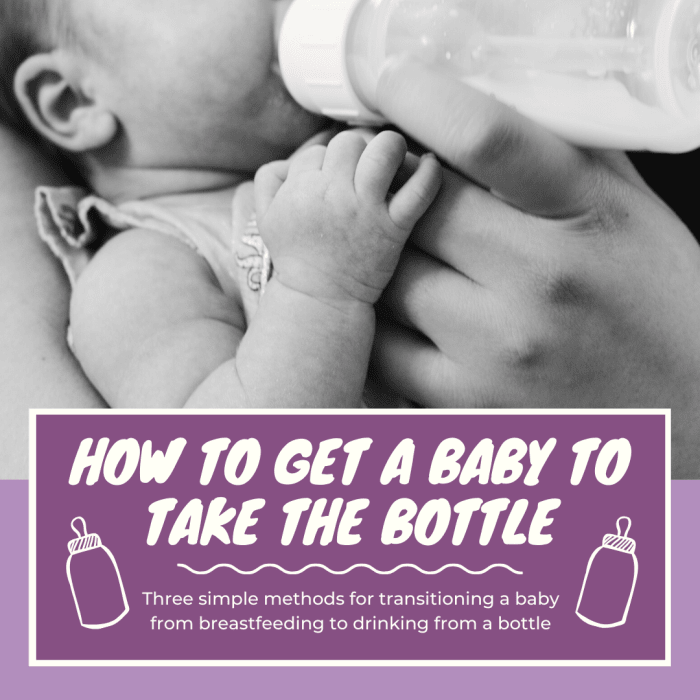
Expect your baby to want to feed at least every hour or two on the first day. Keep clean spoons handy and express your milk every hour or so, to begin building your milk production and to avoid breast problems.
In the first few days, hand expression is usually much more effective than pumping. Colostrum is thick, sticky, and produced in very small amounts – often too small to cover the bottom of a container, so much of it simply sticks to the pump parts. If you choose to pump, wipe off all the droplets you can with a clean finger, and give them to your baby.
It’s important that you take out of your breast more colostrum and milk than your baby takes in. Your baby may be eating a bit less because of this unaccustomed way of feeding, and you want to set up normal milk production. Your milk production will increase automatically over the first few days, and frequent expression helps that happen faster, more smoothly, more fully, and with fewer problems.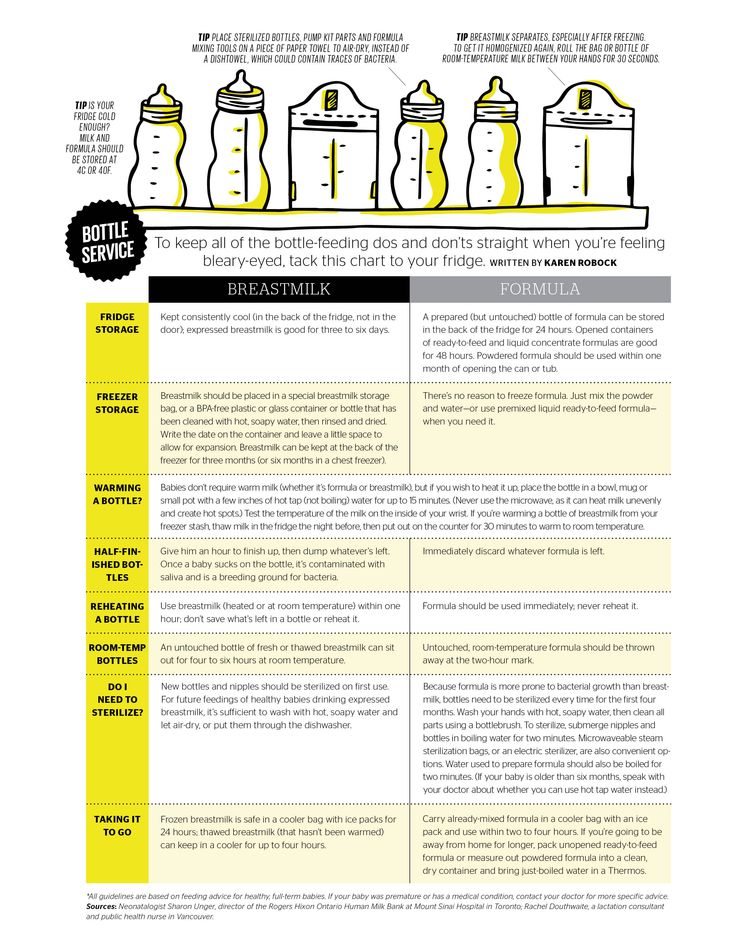
As your thick, small-quantity, sticky colostrum changes to thin, larger-quantity liquid milk, your baby will probably take more at each meal, and meals will probably be more widely spaced. A good quality electric breast pump may become an effective option at that point. Most of the world uses only hand expression, so if you prefer it, it’s a great technique. Whatever method you use, at this stage express milk at least eight times each day – 10 or more if you can. It’s much easier to cut back later than it is to boost your production if it’s set too low at the start. For more information on expressing milk after the early days, see our posts here:
Hand expressing
Pumping
Here’s some of what we know babies are looking for when they want to nurse.
- They expect to have their whole front supported. Some people call it belly to belly or chest to chest, or “baby doing a chest plant”. Have both your baby’s nipples, both elbows, navel, and the insides of both knees touching you, head turned, and cheek against breast.

- They expect their head higher than their hips. Babies can eat in many positions, but just like adults, they tend to prefer a more upright position than a totally sideways one.
- They expect to have their feet supported. No one feels secure with their feet dangling. Even babies tend to feel more “grounded” when their feet touch something. Maybe that’s why a mother, leaning back with her baby on her chest, tends to play with the baby’s feet.
- They expect to feel their way to where they’re going. Babies “lead with their face,” often turning their head side to side, feeling their way cheek by cheek. They reach with their hands too, maybe holding Mama’s nipple when they find it, like little mountain climbers.
- They expect to “come from below.” Babies can push themselves forward, but they can’t back up. If they “overshoot,” it can help to move them back a little so they can push forward again.
- They expect their mouth to “come from below” too.
 Babies tend to tip their head back to take the breast, so that they take in not just the nipple but the part of the breast that their tongue lies against. They’re not so interested in the part of the breast near their nose, so “centering the nipple in the baby’s mouth” doesn’t make sense to them.
Babies tend to tip their head back to take the breast, so that they take in not just the nipple but the part of the breast that their tongue lies against. They’re not so interested in the part of the breast near their nose, so “centering the nipple in the baby’s mouth” doesn’t make sense to them. - They don’t expect to be told what to do. Too often, we get caught up in holds, and positions, and trapping an arm or leg, and curling their lip out for them, as if they didn’t know what they were doing. It makes more sense to give them time to sort things out for themselves.
The easiest way to meet their expectations is to lean back in a propped-up hospital bed or in a similar position at home, so that your chest-planted baby is held on you by gravity. Be a cheerleader, not an instructor. Help if you like, but follow instead of leading. A skilled breastfeeding helper can give you on-the-spot pointers. Some other things that may help:
- Offer to nurse when your baby is asleep or very sleepy, such as during the night or while napping.
 Babies can nurse without opening their eyes and even without waking up completely. Sometimes they do better half-asleep than fully awake.
Babies can nurse without opening their eyes and even without waking up completely. Sometimes they do better half-asleep than fully awake. - Dim the lights and practice in a place that’s free from distractions.
- Offer to nurse when your baby is already partly full, not frantic. If your baby falls asleep at your breast without nursing, it still builds good memories for both of you.
- Use lavish praise when you practice together, and be business-like with other ways of feeding: “This spoon/eyedropper/bottle feeds your tummy, but being at my breast feeds your soul.”
- Relax with your baby in different positions – both of you lying on your side, your nipple about level with your baby’s eye; sitting up, if you’re large-breasted, your baby in your lap; leaning back, your baby’s foot resting on your thigh; your baby more sideways or more vertical. Look for positions that keep as much of your baby’s front against you as you can.
 Or try something that ignores everyone’s suggestions. There are no rules.
Or try something that ignores everyone’s suggestions. There are no rules. - Consider sleeping together, once you’re home, with both of you topless. Many babies have started nursing at night “accidentally”, when the pressure is off and the breast is right there waiting. Before you bedshare, be sure to read our post on Safe Sleep so you know how to make your bed as safe as possible.
- Provide plenty of skin contact. Some babies latch on by themselves if you lean back and relax in a warm bath together, baby on your chest.
- Use a baby sling or carrier to keep your baby close between feedings.
- Keep the process happy. Play at nursing rather than working at nursing. You don’t have to try at every feeding, or even every day. Everything will come together in time, especially if you have a skilled, gentle, hands-off helper.
- Be patient. Love your baby.
You’ll find much more information on expressing milk, supplementing, the early days in general, and finding a good helper in The Womanly Art of Breastfeeding, 8th edition (older editions are not as thorough or up-to-date).
There are a number of reasons why an older baby may have stopped feeding at the breast, or may never have fed at the breast. They include being adopted, being unable to nurse for medical reasons such as having a cleft palate, mother and/ or baby having experienced a long period of illness, or maybe mother and baby have had a long period of separation.
Sometimes a mother may regret her decision to stop breastfeeding and decide to relactate. You can find information about relactating here.
If your baby is beyond the early months, has been breastfeeding happily and stops suddenly this may be a nursing strike, you can read more about nursing strikes here.
If your baby has not been breastfeeding, ever or for a sustained period, it may take time to coax him to feed at your breast regardless of whether you have a good milk supply or not. Forcing your baby to your breast is extremely unlikely to work, it is more likely to cause your baby stress, and may result in him forming an aversion to breastfeeding.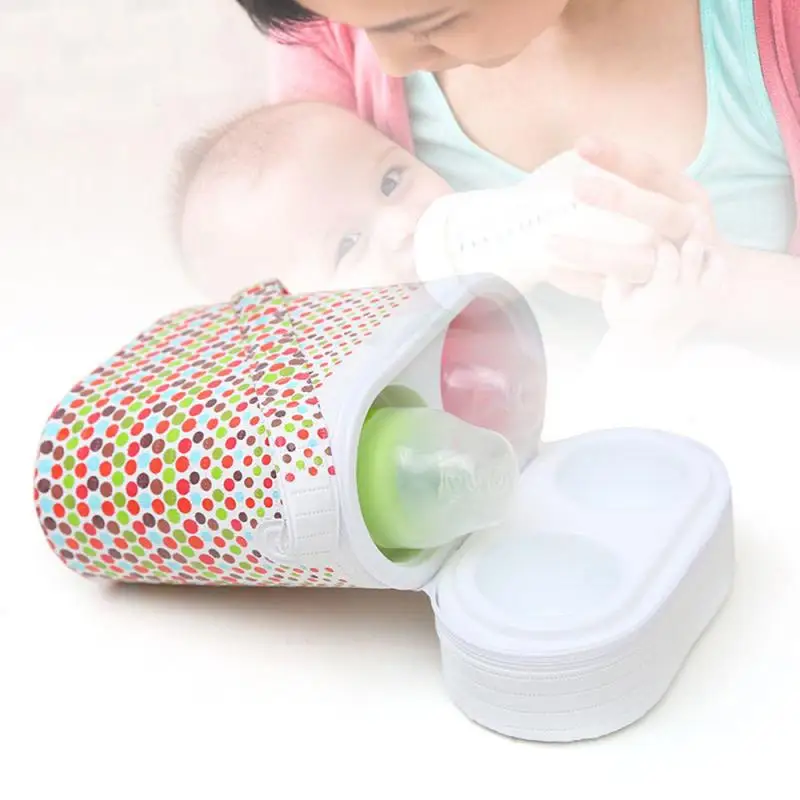 As your baby gets better at nursing and is able to get more milk at your breast, he will grow to trust that breastfeeding works and will have more patience when latching on.
As your baby gets better at nursing and is able to get more milk at your breast, he will grow to trust that breastfeeding works and will have more patience when latching on.
Lots of skin-to-skin contact (baby in only a diaper against your bare chest) can help your baby nurse better and even gain weight faster. Keep your baby with you as much as possible, and give him lots of opportunities to nurse, don’t worry if you’re not successful at first, keep offering.
If you allow your baby to fall asleep, skin-to-skin, at your chest, you can catch his earliest hunger cues when he wakes again. If your baby moves toward your breast and then falls asleep before even mouthing your nipple, or after sucking a few times, then these are positive first steps, not failures.
Carry your baby close to you (a sling or other baby carrier can help with this). “Wear,” carry, hold and cuddle your baby as much as possible; carry your baby on your hip while doing other things, play with your baby, and give him lots of focused attention.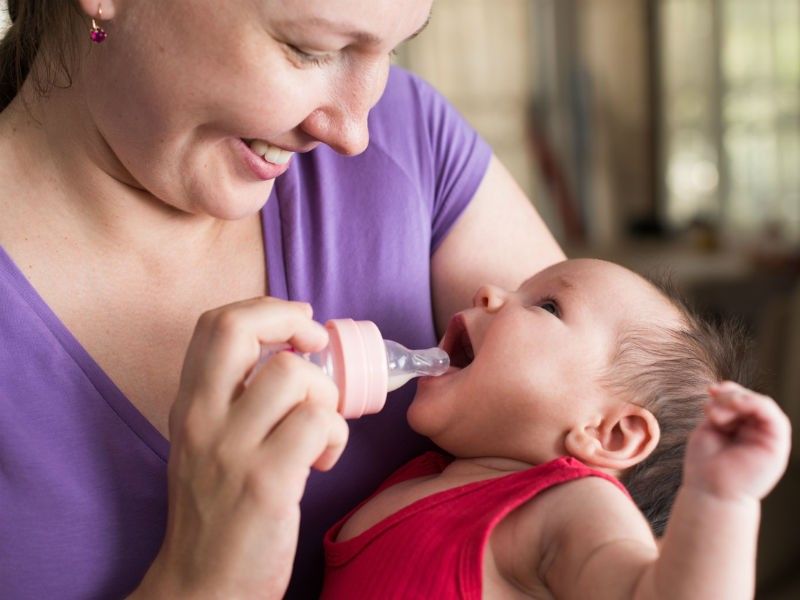
Sleep near your baby. If he sleeps with you, you’ll get more skin-to-skin contact, plus give him more access to your breast. See our post on sleep. If your baby is not in the same bed, have his cot/bed beside your bed or in the same room so that you can catch his early feeding cues, breastfeed easier at night, and get more sleep.
Offer your breast when he is not hungry. Try giving him most of his feeding by bottle and then switching over to breastfeeding.
If he is used to a bottle, and completely refusing your breast, he may be willing to breastfeed with a nipple shield.
The following approach works for some families. You will need an at breast, or chest, supplementer link to do this.
- Only mom feeds the baby (both solids and bottles).
- Baby is always held by mom when being fed.
- Don’t allow baby to hold his own bottle. If baby is used to holding his own bottle you may need to gradually get him used to you holding it. Put a sock over it so that it looks more like a piece of clothing than a bottle.
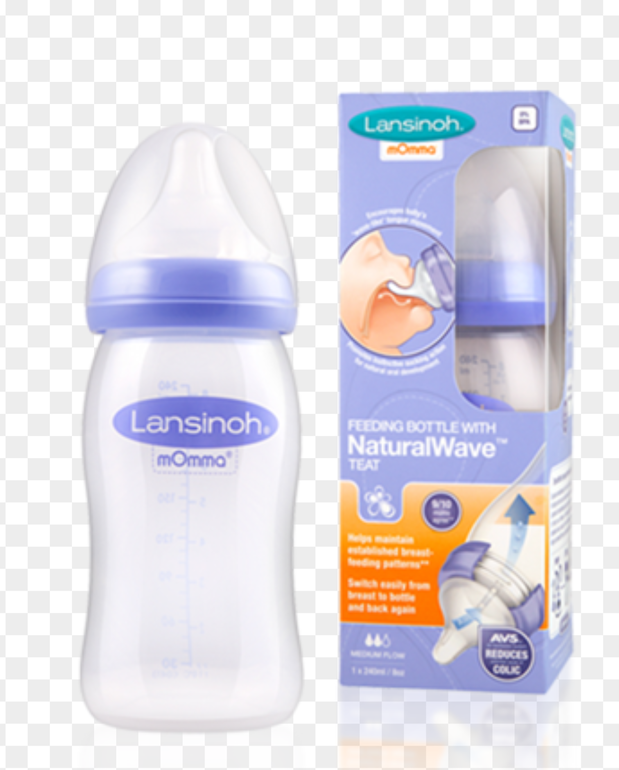
- When baby is comfortable with mom holding the bottle, and being held by mom while feeding you are ready to try the at breast supplementer.
- The first step is to thread the tube of the supplementer through the nipple of the bottle he usually takes, and feed him that. It may contain your expressed milk or a supplement.
- Next, move the bottle nipple over your own nipple.
- Once he is comfortable sucking on the nipple with the at breast supplementer over your nipple you are ready to try and move him to your breast. Toward the end of the feeding try and switch him to your breast.
- You may try to feed at first with the supplementer (even if you have a good supply) as baby may like the faster flow he is used to getting from the bottle. You can eventually wean your baby off the supplementer.
- Even if you don’t manage to wean your baby off the supplementer it is a lovely way to share a nurturing at-breast relationship with your baby.
- Read more about at-breast supplementers here.
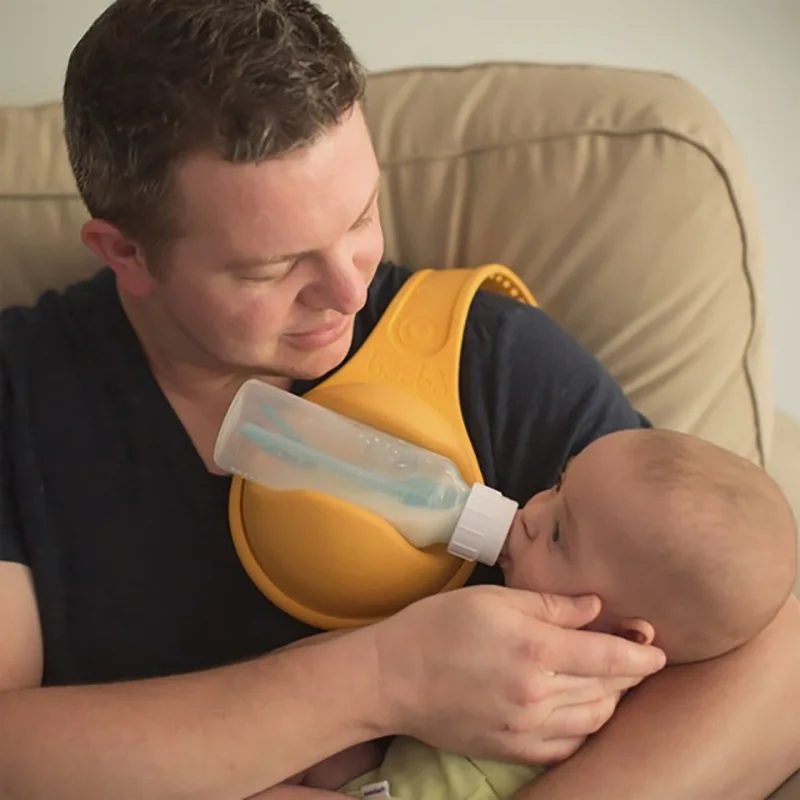
Revised January 2020
Bottle and breast: how to combine
Mother's milk is the best food for a newborn: it promotes the growth and development of the baby, supports his immunity. But sometimes there is a need for additional use of mixtures. In this case, breastfeeding and the bottle must be combined correctly - then the child will receive the necessary amount of nutrients, and mixed nutrition will not harm him.
When is the need for mixed feeding
The decision to supplement breastfeeding with formula is the best solution when the mother of a newborn has to be away frequently and/or for long periods. If a woman does not want to express milk or cannot provide the required amount of it, the use of special nutrition, which involves bottle feeding, will help out.
The second reason why lactation is supplemented with the use of a mixture is the high appetite of the child, in which the baby does not have enough mother's milk. But there are also cases when the newborn has a normal, not increased appetite, but the woman does not produce enough milk, and the baby is not saturated. In this case, experts recommend breastfeeding and bottle feeding.
But there are also cases when the newborn has a normal, not increased appetite, but the woman does not produce enough milk, and the baby is not saturated. In this case, experts recommend breastfeeding and bottle feeding.
Why can a baby stop breastfeeding after a bottle? Differences in the way nipples and breasts are taken
The main reasons why babies may refuse mother's milk in favor of bottle feeding:
- Breast imperfections (tight, inverted nipples).
- Diseases of the tongue (this is important, because due to it the child absorbs mother's milk, and with the help of the cheeks - infant formula).
- Maternal irritability experienced by the newborn during breastfeeding.
- Sharp, unfamiliar smell from mother's skin.
- Improper attachment of the infant to the breast during feeding.
- Changes in the taste of mother's milk (for example, if a woman consumes spices, alcohol, coffee), which makes such food unpleasant for the child.
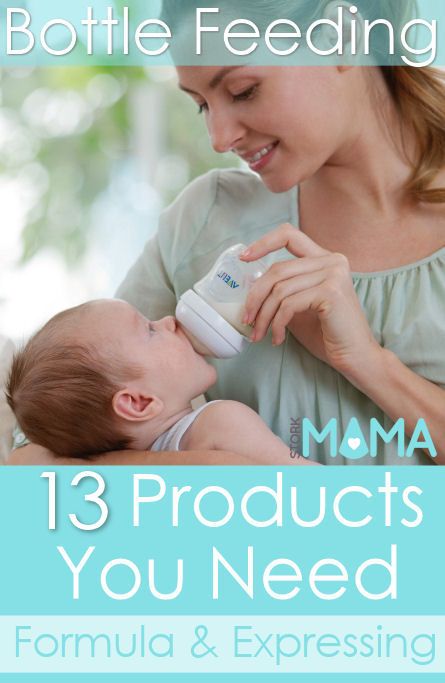
- Stress factor.
- Teething period.
If there is a need to return to breastfeeding, one way to teach to breastfeed after a bottle is to make the use of formula from a container less comfortable. To do this, you need to replace the nipple with a container, choosing the option with a smaller hole. To draw in the mixture, the baby will have to make extra efforts, while drinking mother's milk is an easy, convenient process.
If the baby does not latch on after the bottle, no effort is required to latch onto the nipple. This will lead to irritability, which can harm the condition of the breast and oral cavity of the newborn. It is more advisable to use simple but effective methods of how to return breastfeeding after a bottle - maintaining bodily contact with the baby, avoiding the use of pacifiers, sleeping together. Mom needs to understand that breastfeeding should be restored gradually, since a sharp refusal to use the mixture will have a stressful effect on the newborn. Also, so that the child does not wean from the mother's breast, it is necessary to supplement it not from a bottle, but from a sterile measuring syringe (without a needle). The adaptation of the child to the previous (natural) nutrition will come faster if the newborn has as much contact with the mother as possible during the day.
Also, so that the child does not wean from the mother's breast, it is necessary to supplement it not from a bottle, but from a sterile measuring syringe (without a needle). The adaptation of the child to the previous (natural) nutrition will come faster if the newborn has as much contact with the mother as possible during the day.
Advice on how to start giving a bottle
Mothers who want to properly organize supplementary feeding should take into account the following nuances:
1. First of all, milk should be given to the newborn, and only after that - the mixture from the bottle.
2. The volume of the first supplementary feeding should not exceed 10-30 grams. This is necessary for the full adaptation of the baby to a new type of food.
3. At night, it is better not to bottle feed the baby. During this period, there is an increased production of the hormone - prolactin. And for women who plan to soon return from a mixed diet to breastfeeding, breastfeeding at night will help to avoid premature cessation of milk production.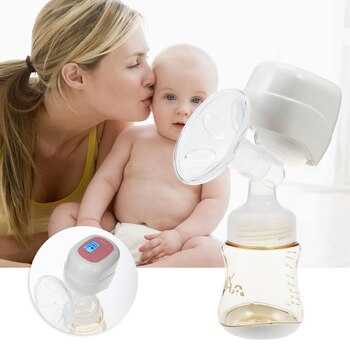
In order for the baby to take the bottle, the mother needs to be in a comfortable position. It is advisable to put a pillow under the elbow. With the right position, the baby does not swallow air during feeding. This avoids the development of intestinal colic, digestive problems, defecation disorders. If, after feeding from a bottle, the baby immediately falls asleep, and after 10-15 minutes wakes up and cries, during the absorption of the mixture, air has entered his gastrointestinal tract, which causes pain in the abdominal cavity.
Teaching a newborn to use formula from a bottle involves creating comfortable conditions. Feeding from a plastic container is associated in a child with a pleasant process if the nipple opening has a normal diameter and is not clogged. Then the baby feeds on the mixture, without making additional efforts, and is fully saturated.
So that the child does not wean from the mother's breast, it must be offered at least 3 times a day (even if there is not enough milk).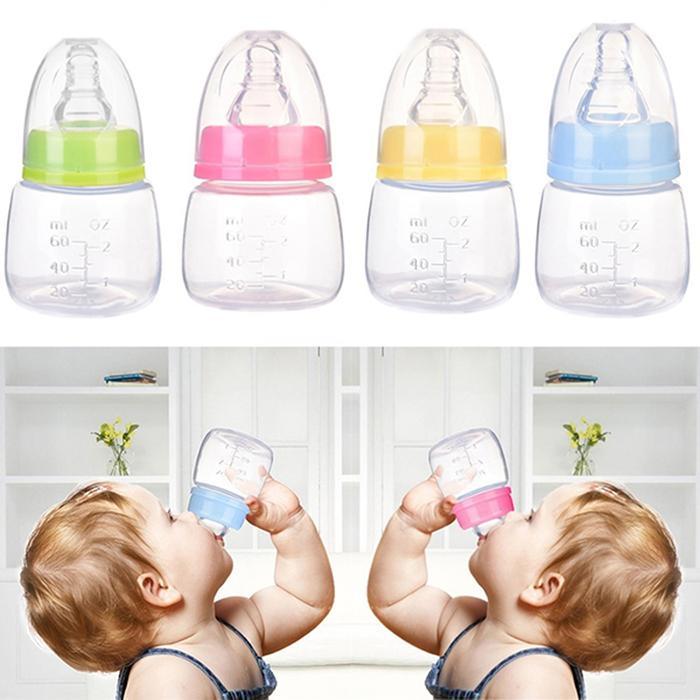
Baby won't take the bottle | Philips Avent
search support iconSearch Keywords
Home ›› What to do when your baby refuses a bottle
↑ Top
any problems. If your breastfed baby refuses a bottle, don't worry. This is a common occurrence in many babies who are used to breastfeeding. Obviously, this can create certain difficulties for moms, especially if you need to return to work in the near future.
3 Philips Avent bottle feeding products:
So why is your baby refusing to bottle and crying? There are many ways to quickly and easily teach a breastfed baby to a bottle. Here are important tips on what to do when your baby refuses a bottle.
Is the baby refusing the bottle? Take a step back
If your baby cries while bottle feeding, the first thing to do is to start over and rethink your feeding approach and technique. Try the following steps when bottle feeding your baby: [1]
- Lift and tilt your baby's head forward.
 Before inserting the pacifier into the baby's mouth, make sure that the baby's head is raised and tilted over his body to avoid choking: so that the baby does not choke and have the opportunity to burp during bottle feeding.
Before inserting the pacifier into the baby's mouth, make sure that the baby's head is raised and tilted over his body to avoid choking: so that the baby does not choke and have the opportunity to burp during bottle feeding. - Insert the pacifier. Bring the pacifier to the baby's lips and gently guide it into the baby's mouth. In no case do not try to press the nipple on the baby's lips and try to push it into his mouth. After touching the nipple to the baby's lips, wait until the baby opens his mouth and takes the nipple.
- Hold the bottle at an angle. Tilt the bottle at an angle so that the nipple is only half full. So the child can eat at his own pace.
- Let the baby burp during and after feeding. It can be useful for a child to burp not only after feeding, but also approximately in the middle of the process. This will help reduce gas or tummy discomfort that your baby may experience from swallowing too much air.
- Stop in time, do not overfeed the baby.
 If the baby begins to turn his head away from the bottle or closes his mouth, then he has eaten and you need to stop feeding.
If the baby begins to turn his head away from the bottle or closes his mouth, then he has eaten and you need to stop feeding. - The flow of milk from the nipple to the baby may be weak or, on the contrary, too fast, so he is naughty and refuses the bottle. Try changing the nipple to a nipple with a different flow.
Other tips if your baby refuses the bottle
If you've followed the steps above and your baby still refuses the bottle, don't worry. There are other ways to help bottle feed your baby. Here are some simple tricks you can add to your bottle feeding process. [2]
1. Remind your child about mom.
Sometimes a child can be fed by someone other than his mother - dad, grandmother or, for example, a nanny. If your baby fusses while bottle feeding, try wrapping the bottle in something that smells like mommy, like a piece of clothing or some fabric. This will make it easier to feed the baby when the mother is not around.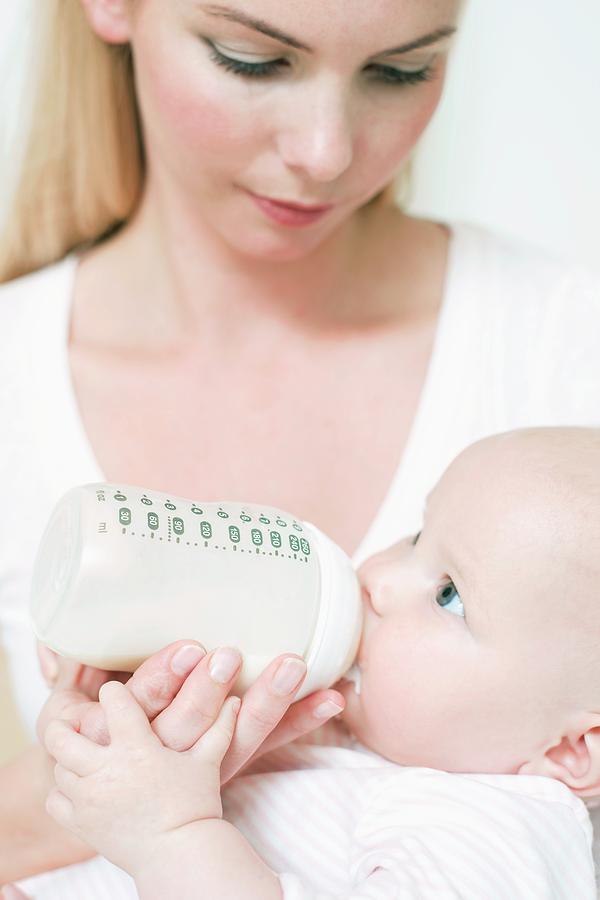
2. Try to maintain skin contact while bottle feeding.
Some babies need contact with their mother, so try bottle feeding while leaning against you. However, some babies are better at bottle feeding when they are in the exact opposite position than when they are breastfed. For example, there is a position with bent legs. Lay the child on your bent knees, facing you, pointing the child's legs towards your stomach. During feeding, the baby will be able to look at you and contact you in this way. If your baby refuses a bottle, experiment to see which works best.
3. Move while feeding.
Sometimes all it takes is a little wiggle or walk to get your baby to take the bottle. The next time your baby starts crying while bottle feeding, try moving around a little rhythmically to calm him down.
4. Try changing the milk temperature.
If the baby still does not want to take the bottle, check if the milk in the bottle is too hot or too cold. Before feeding, put some warm breast milk on the inside of your wrist to check the temperature. Milk should be warm, but if it seemed hot to you, just place the bottle for a short while under a stream of cold water.
Before feeding, put some warm breast milk on the inside of your wrist to check the temperature. Milk should be warm, but if it seemed hot to you, just place the bottle for a short while under a stream of cold water.
Choosing the right bottle for your baby If you plan to combine bottle feeding with breastfeeding, it is advisable to choose bottles with a nipple that will have a wide base as the bottle's grip will be closer to the breast's. Also pay attention to the fact that the nipple is elastic and flexible, the child must make an effort to drink from the bottle, as well as from the breast. Give preference to nipples with an anti-colic valve that vents air out of the bottle.
Natural bottle allows you to combine breast and bottle feeding. 83.3% of babies switch from natural bottle to breastfeeding and back.*
If you choose a bottle for artificial feeding, traditional bottles are fine, but it is desirable that the nipple is made of a hypoallergenic material, such as silicone, has an anti-colic valve and did not stick together when bottle fed. If your baby spit up frequently, then use special bottles with an anti-colic and anti-reflux valve, which reduces the risk of spitting up and colic.
If your baby spit up frequently, then use special bottles with an anti-colic and anti-reflux valve, which reduces the risk of spitting up and colic.
Bottle with unique AirFree valve reduces the risk of colic, gas and spitting up. With this bottle, you can feed your baby in an upright or semi-upright position to reduce spitting up. Due to the fact that the nipple is filled with milk and not air during feeding, the baby does not swallow air, which means that feeding will be more comfortable.
Both bottles are indispensable if you want to breastfeed, bottle feed or just bottle feed your baby.
“My baby refuses to breastfeed but bottle feeds – help!”
Sometimes a baby gets used to bottle feeding and refuses to breastfeed. Therefore, it is important to use bottles that are suitable for combining breastfeeding with bottle feeding. If, nevertheless, you are faced with the fact that the child refuses to take the breast, try using silicone nipple covers to make the transition from the bottle to the breast and back more imperceptible.
Remember that if you want to combine breastfeeding and bottle feeding, it is worth waiting at least a month before offering a bottle, so that you are lactating and have time to get used to each other and develop a breastfeeding regimen.
Breastfeed and bottle feed your baby with pleasure
Remember that it takes a while for your baby to get used to bottle feeding. This is completely normal. If you have to go to work, be sure to set aside enough time to bottle train your baby beforehand.
Remember that every child is different, so what works for one may not work for another. With a little time and patience, you will find out what works best for your baby when he refuses a bottle.
You will identify your child's unique needs. However, if your baby still refuses the bottle after all the steps above, check with your pediatrician.
Articles and tips from Philips Avent
References:
*O.










